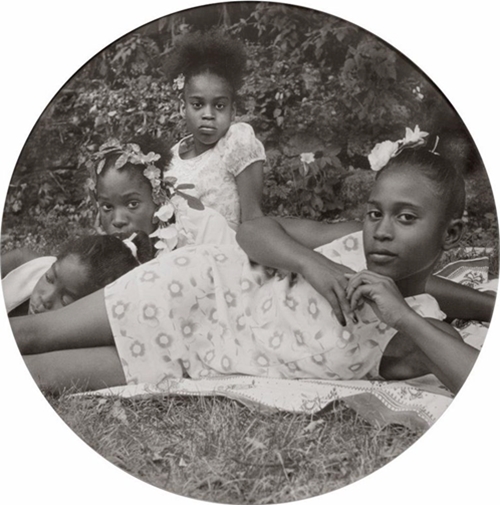A Detroit Institute of Arts exhibit of African American art earns national attention, but it's jarring to see Bloomberg suggest the paintings, sculptures and other works are from "Detroit's Hidden Art Collections."
That H-word irritates a handful of online critics who feel it implies something secretive that the museum had to find.

Five dozen works are moving temporarily from 19 local art patrons' homes or offices and into DIA galleries for 16 weeks, starting Nov. 12. Describing the collections as hidden provokes discussion because that word doesn't just mean out of public view.
"Concealed" is part of Merriam-Webster's first definition. "Secret" and "covert" are among synonyms.
"These collections are not 'hidden.' They are in private collections, just like in other major cities," says a Facebook post by Marsha Battle Philpot, an influential Detroit writer and culture keeper. She adds:
"The use of the word 'hidden' to describe anything of which the mainstream is unaware is pernicious, whether wittingly or not, and increasing in Detroit."

"After Manet," a 2002 photograph by Carrie Mae Weems, is loaned by Shirley Woodson and Edsel Reid. (Photos: DIA)
A friend, Susan Brohman, asks sarcastically: "How else can they 'discover' it if it's not hidden? . . . The language is always telling of an age-old sentiment made manifest."
Vince Carducci, dean of Undergraduate Studies at the College for Creative Studies, agrees. "The headline totally sucks," he comments on the same Monday thread.
The educator senses an implication "that Detroit might not be a 'collecting' town" and cites the possible use of "hidden" as meaning "in the dark -- i.e., the racialist overtones both of the work being collected and the collectors collecting it, which are only now being discussed due to the rise in market value."
At the same time, Philpot welcomes the "great news about a new exhibit at the DIA." It's titled "Detroit Collects: Selections of African American Art from Private Collections," running from next Tuesday until March 1.
Artists represented include Charles McGee, Carrie Mae Weems, Romare Bearden, Al Loving, Sam Gilliam, Hughie Lee-Smith, Beauford Delaney and Alison Saar.
"This exhibition will demonstrate local collectors’ interest in the diverse media, styles, genres, influences and subject matter that inspired them to collect art created by African Americans," the DIA website says.
At Bloomberg, New York-based arts writer James Tarmy cites the influence of "a small, tight-knit group of collectors [that has been] working on its own to foster arts and patronage in downtown Detroit through a group called the Detroit Fine Arts Breakfast Club."
What started in 2009 as an informal grouping led by the collectors Harold Braggs and Henry Harper became, over time, a place where hundreds of people would meet local artists, view their art, and sometimes buy it.
"I just bought two artworks last week from someone in the Breakfast Club," says Deborah Ford, a judge on Michigan's 36th District Court and a collector of African American art. "I think they’re fabulous."

"The Accusation," a 1964 oil painting by Bob Thompson, is on loan from Robert and Katherine Jacobs.
Breakfast Club members and other leading African American art buyers locally have savvy tastes, Tarmy notes:
Artworks championed by the city’s patrons have become increasingly sought-after.
There’s a work by the artist Kerry James Marshall in the forthcoming DIA show, for instance. Last year, one of his paintings sold for a record-setting $21 million at auction.
Among those lending works for the "Detroit Collects" show are former Masco Corp. chairman Richard Manoogian, past General Motors group vice president Roy Roberts and his wife Maureen, Judge Ford and her husband Jerome Watson, retired surgeon Walter Evans and his wife Linda, artist Shirley Woodson and retired teacher Cledie Collins Taylor.
Tarmy quotes art donor Robert Jacobs, a Buddy's Pizza heir:
"The exhibition shows Detroit's commitment to the African American community and African American art. This museum has gone out of its way to be inclusive."
► DIA gallery: Photos of 26 works in the show, with titles, artists and years.











